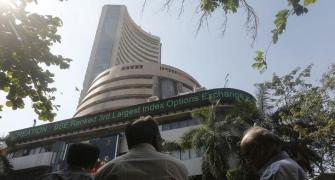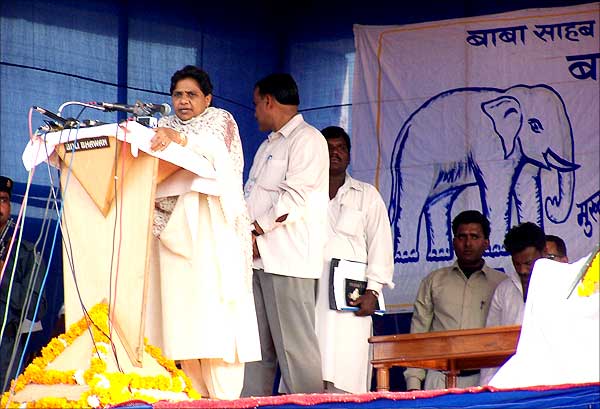The IMD attributed the projection to a weakening of El Niño and the Indian Ocean Dipole turning positive.

The monsoon is likely to be just normal at 96 per cent of the Long Period Average (LPA) this year for the second year in a row, the India Meteorological Department (IMD) said on Tuesday, giving rise to expectations of three to four per cent farm gross domestic product (GDP) growth, which would fuel rural demand and ease food inflation.
However, an assessment of the specific impact of the monsoon on the economy would have to wait a while, as the timing of the monsoon arrival and its distribution would be key, experts said.
The IMD attributed the projection to a weakening of El Niño and the Indian Ocean Dipole (IOD) turning positive. Both factors are seen combining to boost the southwest monsoon, though doubts linger over the intensity of the rains.
The IMD predicted a 38 per cent chance of near-normal showers. The forecast has a model error of five per cent. The IMD, which released its initial forecast for the four-month monsoon season, also said preliminary indications showed this year’s rains would be well distributed.
Detailed forecasts on regional distribution will be made in early June, by when more information on El Niño and the IOD is available. Though the impact of agriculture on the economy has come down over the years, it still is an important factor to the rural economy and its cascading effect on India Inc’s balance sheet.
Sunil Kataria, business head, India and SAARC, Godrej Consumer Products, said, “The forecast of a normal monsoon is a positive. Rural India is a key driver of fast-moving consumer goods growth and rural depends on monsoon since it is linked to farm output and income. The projection of a normal rainfall will, therefore, help in driving up rural consumption and accelerate overall growth.”
Ajay S Shriram, chairman and senior managing director, DCM Shriram, a fertiliser major, hoped that the IMD’s prediction will further brighten the prospects of agriculture and lead to healthy consumption of agri inputs like fertilisers.
El Niño is a warming of sea surface temperature along the equatorial Pacific Ocean, while in the IOD, sea surface temperature in the western Indian Ocean becomes alternately warmer and cooler than the eastern part.
“The latest forecast indicated a weak El Niño developing during the later part of the season, while positive IOD conditions are likely to be favourable for a normal monsoon,” IMD Director-General K J Ramesh said.
The country had back-to-back droughts in 2014 and 2015 and normal monsoon in 2016.
Renowned agriculture scientist M S Swaminathan said on Tuesday, “Normal monsoon will certainly help achieve the production goals. Better price for the produce and marketing opportunities are equally important.”
Shobhana Pattanayak said that the government hopes for “a successive good foodgrain production” in 2017-18 after record of around 272 million tonnes in 2016-17.
Soumya Kanti Ghosh, chief economic advisor of the State Bank of India group said the agricultural GDP is most likely to be in the range of three to four per cent, a tad lower compared to the FY17 expectations of over four per cent, if rainfall remains normal.
“Even in the case of deficit rainfall, there are instances where agri-GDP has, in fact, expanded (in 2009) and grew slightly more than normal rainfall (in 2010 and 2011) years,” he said.
The three to four per cent farm growth would have a cooling impact on the Consumer Price Index (CPI)-based inflation.
“While other factors such as the rise in minimum support prices and supply demand dynamics for perishables would be important, we expect average CPI inflation to remain stagnant at 4.5 per cent in FY18,” said Aditi Nayar, senior economist, Icra.
The monsoon is considered normal if rainfall during the June-September season is 96-104 per cent of the LPA, the average seasonal rainfall in the country in the last 50 years, estimated at 89 cm. Rainfall below 90 per cent of the average is considered deficient, above normal at 105-110 per cent, and excessive above 110 per cent.
The IMD issues its first monsoon forecast in April and updates it in June. The department, which used a combination of statistical and ocean atmospheric models, said both showed rainfall this year would be normal.
“Earlier, there was a more than a 50 per cent chance of El Niño developing, which has now gone down,” Ramesh said. Private weather forecasting agency Skymet has said rainfall this year will be below normal at 95 per cent of the LPA.
“It is too early to make any firm predictions as the actual rains will arrive almost two months later,” said Madan Sabnavis, chief economist, CARE Ratings. He said factors like arrival of the rains and their distribution would be key.
Mahendra Dev, director of the Indira Gandhi Institute of Development Research, said that the predictions were positive but there was a need to await a clearer picture. Nayar said reservoir storage is currently at around 31 per cent of full capacity, in line with the level in 2015.
With a 14 per cent shortfall in monsoon that year, reservoir storage had peaked at a modest 61 per cent in September 2015, and subsequently fallen to 25 per cent at the end of the fiscal year. Partly on account of the unfavourable rainfall and reservoir levels, the gross value added for crops had contracted by 2.2 per cent during FY16.
“Therefore, the volume, timing and dispersion of monsoon rainfall in 2017 would be quite crucial,” Nayar said.
D K Joshi of CRISIL said, “In many El Niño years in the past, the rainfall has been normal. So, more than the prediction, the actual quantum of rainfall and their distribution matters the most. With the current prediction, however, sowing of short duration crops would be a strategic decision of farmers to deal with deficient rainfall, if any.”
Last year, the IMD had predicted rainfall to be above normal - more than 106 per cent of the LPA - in its first forecast. Actual rainfall was around 97 per cent of the LPA.
Photograph: Cathal McNaughton/Reuters








